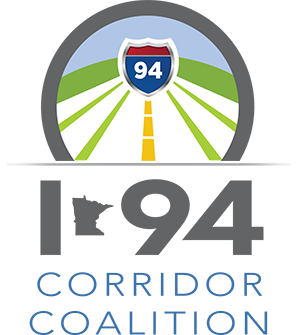May 1, 2018
Years in the making, the cities of St. Michael and Albertville were rewarded hugely by the State of Minnesota Monday, May 1, as it was announced that expansion of Interstate 94 to six lanes between the cities was approved.
The Minnesota Department of Transportation awarded more than $400 million in Corridors of Commerce Projects, and only four projects made the list.
Estimated up to $56 million, the St. Michael-Albertville project will expand I-94 from four to six lanes between Highway 241 in St. Michael and County Road 19 in Albertville. The proposed project is intended to improve the capacity of the interstate by adding a third lane in each direction and make interchange improvements at Highway 241 and at county roads 37 and 19 in Albertville. The project will reduce travel delay by more than 330 hours per day, eliminate slightly less than $1.0 million in crash costs annually, and make trips on the corridor much more reliable.
This project was the second highest scoring Greater Minnesota project with a score of 580. It was submitted by several people including Steve Bot (St. Michael City Administrator), Adam Nafstad (Albertville City Administrator) and Adam Flaherty (Otsego City Administrator.
The I-94 project is expected to be mostly constructed in 2019, with preliminary work this year.
HWY. 169
Another of the four projects approved was the nearby Highway 169 project in Elk River.
This project will convert Highway 169 in Elk River to a freeway. The proposed project will construct interchanges at Main Street and School Street, 193rd Avenue, and a partial interchange at 197th Avenue.
The other two projects are a MnPASS lane on I-494 from Highway 77 to I-35W, and a new interchange at I-494 and Bush Lake Road to I-35W.
In January, MnDOT solicited project recommendations from the public, including local units of government, transportation advocates and interested citizens. It also conducted significant public outreach when developing the scoring criteria. MnDOT received a total of 299 project recommendations. After duplicate work and ineligible projects were removed, the agency had 172 project recommendations valued at $5.5 billion.
With the assistance of a consultant engineering firm, the agency scored and ranked the recommended projects using a set of eligibility and selection criteria which were passed by the Minnesota Legislature and required under state law.
Criteria included the proposed project’s return on investment, economic impact, freight efficiency, safety improvement, regional connections, policy objectives and community consensus. The final key requirement was that 50 percent of the funding be spent in Greater Minnesota, or those MnDOT areas that are not in the MnDOT Metro District, and 50 percent be spent in the Metro District, which is the seven-county metro area plus Chisago County.

